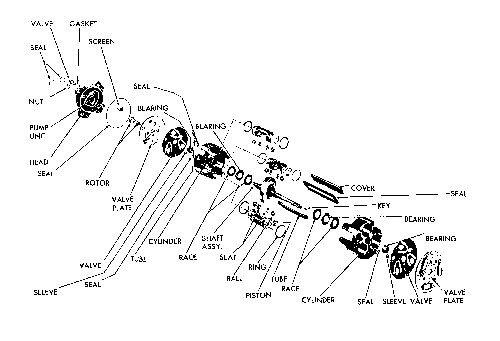I feel a bit like the odd one out :hDe: a bit nervous to reveal my true ambition! Ultimately, I don't know which club or forum is for me, but I prefer it here although it feels like the title just doesn't fit the bill for me
Sooo, my true feelings right now to explain that, is the model engine in my dream project is really probably the least important bit - I will enjoy it, but I have no preference - anything will do, and when I say anything, I think I mean IC - I don't dislike steam and love to see them being loved but it doesn't push my buttons at all from a personal project perspective.
- I will enjoy it, but I have no preference - anything will do, and when I say anything, I think I mean IC - I don't dislike steam and love to see them being loved but it doesn't push my buttons at all from a personal project perspective.
I'd like to link my undecided engine to a hydraulic pump via an appropriate gearbox and drive at least 2 variable displacement axial piston motors (hopefully reversible via the swash plate with an RC servo)- all built from scratch - and I'd like to plant this in a tracked vehicle and I might as well build that too but the chassis/bodywork will probably be just designed by me, and laser cut by someone else.... but like the engine, I've no preference. I'm British, so I'm thinking something British and modern, Challenger II fits the bill, but anything will do.
I'm new to this model engineering lark and look forward to getting stuck in. I don't expect to able to achieve my ambitions in the next month or 2, and to be honest progress in the next year or 2 would be nice. I'll just concentrate on some simple IC engines to get me going.
Getting back to knowing where I fit in, I've looked about on the net and google's taken me to various RC model forums for earth movers and JCB's and stuff which fascinated and inspired me more but the good chaps there just seemed to be buying off the shelf plastic parts/pumps and so on and running them on batteries etc. with sound effects - it's not really ticking my boxes, would anyone be able to recommend a forum or club online where people either just get up to their eye balls in anything mechanical or anything hydraulic perhaps - seems a bit far fetched!
- seems a bit far fetched!
Sooo, my true feelings right now to explain that, is the model engine in my dream project is really probably the least important bit
I'd like to link my undecided engine to a hydraulic pump via an appropriate gearbox and drive at least 2 variable displacement axial piston motors (hopefully reversible via the swash plate with an RC servo)- all built from scratch - and I'd like to plant this in a tracked vehicle and I might as well build that too but the chassis/bodywork will probably be just designed by me, and laser cut by someone else.... but like the engine, I've no preference. I'm British, so I'm thinking something British and modern, Challenger II fits the bill, but anything will do.
I'm new to this model engineering lark and look forward to getting stuck in. I don't expect to able to achieve my ambitions in the next month or 2, and to be honest progress in the next year or 2 would be nice. I'll just concentrate on some simple IC engines to get me going.
Getting back to knowing where I fit in, I've looked about on the net and google's taken me to various RC model forums for earth movers and JCB's and stuff which fascinated and inspired me more but the good chaps there just seemed to be buying off the shelf plastic parts/pumps and so on and running them on batteries etc. with sound effects - it's not really ticking my boxes, would anyone be able to recommend a forum or club online where people either just get up to their eye balls in anything mechanical or anything hydraulic perhaps





